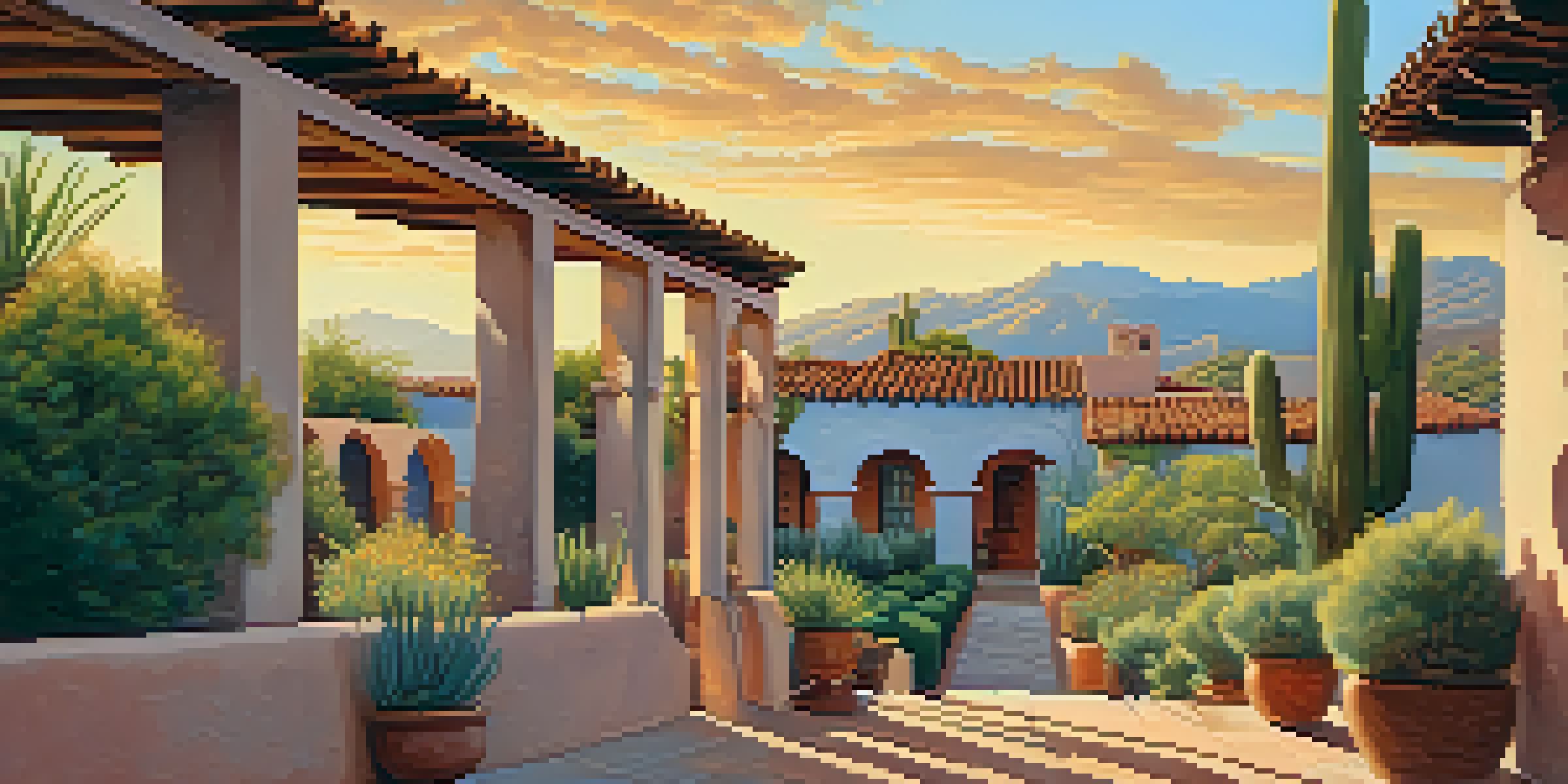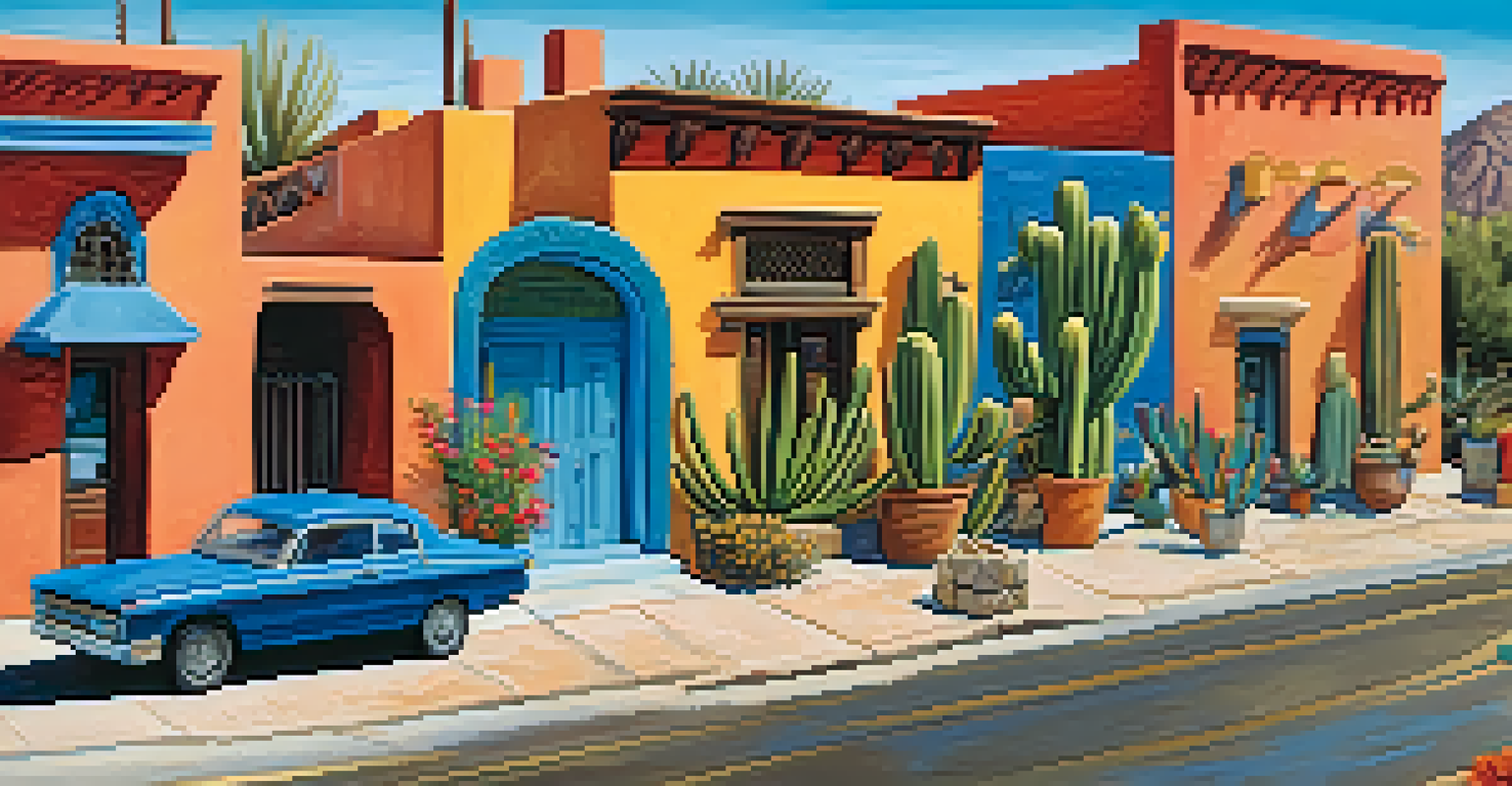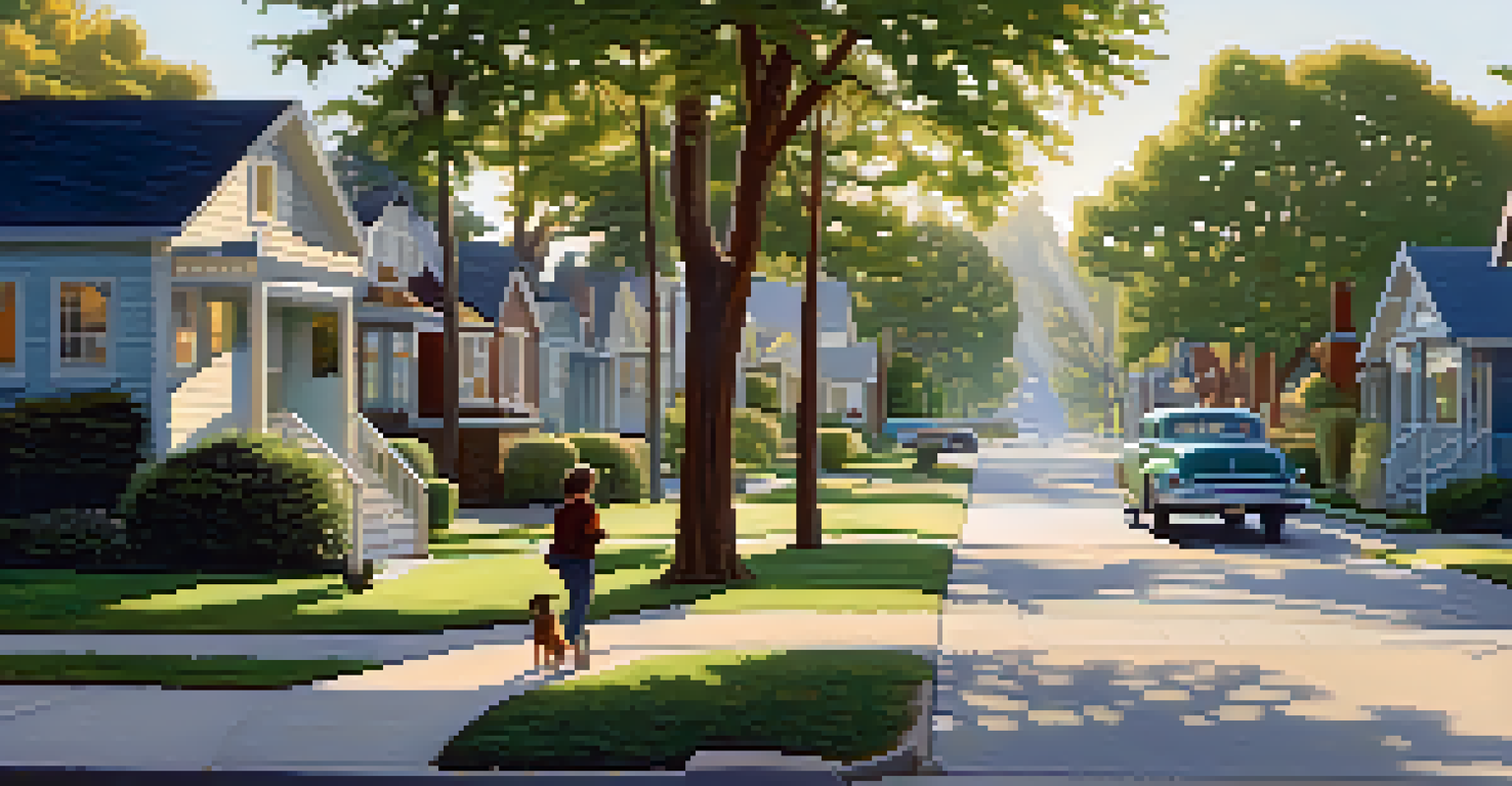Tucson's Historic Districts: A Closer Look at Local Initiatives

Understanding Tucson's Historic Districts and Their Significance
Tucson is rich in history, and its historic districts reflect that heritage. These areas showcase unique architectural styles, from Spanish Colonial to early 20th-century designs, telling the story of the city’s evolution. Each district has its own character, offering a glimpse into Tucson's past while contributing to its vibrant present.
Preservation is a form of empowerment; it connects us to our past while shaping our future.
The significance of these districts extends beyond aesthetics; they foster a sense of community and identity among residents. For many, living in a historic district means being part of a story that stretches back generations. This connection to history enriches the cultural fabric of Tucson, making it a unique place to call home.
Local initiatives aimed at preserving these districts play a crucial role in maintaining their charm. By promoting awareness and encouraging responsible development, Tucson ensures that future generations can appreciate the beauty and history of these neighborhoods.
Key Historic Districts and Their Unique Features
Tucson boasts several historic districts, each with distinct characteristics. The El Presidio district, for example, is known for its adobe buildings and lush courtyards, reflecting the city's Spanish roots. Meanwhile, the Barrio Viejo showcases colorful, hand-painted homes that embody the artistic spirit of Tucson.

Another notable area is the Sam Hughes neighborhood, famous for its Craftsman-style bungalows and tree-lined streets. This district not only highlights architectural diversity but also fosters a strong community atmosphere, making it a desirable place for families. Each district tells a different story, contributing to the overall narrative of Tucson.
Importance of Historic Districts
Tucson's historic districts not only showcase unique architectural styles but also foster a sense of community and cultural identity.
These districts are not just historical artifacts; they are living neighborhoods where residents actively engage in preservation efforts. Local organizations often host events and workshops to educate the community about their history and the importance of maintaining these unique areas.
The Role of Local Initiatives in Preservation Efforts
Local initiatives play a pivotal role in preserving Tucson's historic districts. Organizations like the Tucson Historic Preservation Foundation work tirelessly to raise awareness and advocate for policy changes that protect these areas. Their efforts ensure that the charm and character of Tucson's neighborhoods are not lost to modern development.
Historic preservation is not just about buildings; it’s about community and identity.
Community involvement is also crucial, as residents often lead grassroots efforts to maintain their neighborhoods. From organizing clean-up days to participating in local government meetings, these individuals are passionate about protecting their heritage. Their dedication highlights the importance of community in the preservation process.
Additionally, educational programs are offered to inform residents about the significance of their historic districts. By fostering a sense of pride and ownership, these initiatives empower locals to take an active role in safeguarding their neighborhoods for future generations.
Challenges Faced by Tucson's Historic Districts
While efforts to preserve Tucson's historic districts are commendable, they are not without challenges. One significant hurdle is the pressure of urban development, which often prioritizes new construction over preservation. As developers seek to capitalize on the city's growth, historic sites can be at risk of being overshadowed or demolished.
Another challenge is securing adequate funding for preservation projects. Many initiatives rely on grants and donations, making it difficult to maintain momentum without consistent financial support. This uncertainty can hinder long-term planning and the implementation of vital restoration efforts.
Challenges in Preservation Efforts
Urban development pressures and funding challenges pose significant hurdles to the preservation of Tucson's historic neighborhoods.
Moreover, there can be resistance from some community members who may not see the value in preserving historical buildings. Educating the public about the benefits of maintaining these districts is essential in overcoming this skepticism and fostering a unified approach to preservation.
Community Engagement: The Heart of Preservation
Community engagement is the backbone of Tucson's preservation efforts. Local residents, historians, and architects often collaborate to share knowledge and resources, ensuring that everyone's voice is heard. This collective approach fosters a sense of belonging and encourages a unified commitment to protecting their neighborhoods.
Events such as neighborhood meetings, historical tours, and cultural festivals are organized to promote awareness and celebrate the unique heritage of these districts. These activities not only bring people together but also serve as a platform for discussing preservation strategies and challenges.
Through active participation, residents become advocates for their historic districts. This involvement ensures that the community remains invested in preserving their history, creating a lasting legacy for future generations to cherish.
The Impact of Preservation on Local Economy
Preserving Tucson's historic districts has a positive impact on the local economy. Historic neighborhoods often attract tourism, bringing in visitors eager to explore their unique charm and history. This influx of tourists can boost local businesses, from restaurants to shops, creating jobs and supporting the community.
Moreover, well-preserved historic districts tend to have higher property values, benefiting homeowners and local governments alike. When neighborhoods are attractive and well-maintained, they draw potential buyers and investors, enhancing the overall economic health of the area.
Community Engagement Drives Success
Active participation from residents in preservation initiatives ensures a lasting commitment to safeguarding Tucson's rich history.
Investing in preservation not only honors Tucson's past but also paves the way for a prosperous future. By prioritizing these initiatives, the city can create a sustainable economy that thrives on its rich cultural heritage.
Future Directions for Tucson's Historic Districts
Looking ahead, the future of Tucson's historic districts hinges on continued community involvement and effective policy-making. As the city evolves, it will be essential to balance development with preservation efforts. This requires thoughtful planning and collaboration among residents, local government, and developers.
Innovative approaches, such as adaptive reuse of historic buildings, can offer solutions that honor the past while accommodating modern needs. By repurposing these structures for contemporary use, Tucson can preserve its history and meet the demands of a growing population.

Ultimately, the goal is to create a sustainable model for preservation that engages the community and reflects Tucson's unique identity. With ongoing efforts and a shared commitment, the city's historic districts can thrive for generations to come.